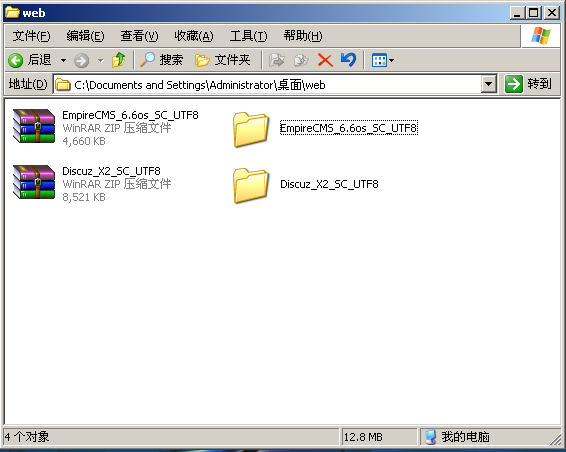Tomcat源码解析系列(九)Pipeline 与 Valve
前言
上篇文章讲到了 Wrapper 的启动。在这篇文章中初次提到了 Pipeline 和 Valve。Pipeline的实现类是 StandardPipeline,StandardPipeline 继承自 LifecycleBase,而 Valve 的实现类则比较多,这些实现类都继承自基类 ValveBase,而 ValveBase 继承自 LifecycleMBeanBase。
1. Pipeline 与 Valve 的初始化
在 ContainerBase 中有一个 Pipeline 类型的对象,其声明为:
/** * The Pipeline object with which this Container is associated. */ protected final Pipeline pipeline = new StandardPipeline(this);
public StandardPipeline(Container container) {
super();
setContainer(container);
}
/**
* The Container with which this Pipeline is associated.
*/
protected Container container = null;
@Override
public void setContainer(Container container) {
this.container = container;
}
可以看出,每一个 Container 对象都包含了一个 Pipeline 对象,包括 Engine、Host、Context、Wrapper。
public StandardEngine() {
super();
pipeline.setBasic(new StandardEngineValve());
/* Set the jmvRoute using the system property jvmRoute */
try {
setJvmRoute(System.getProperty("jvmRoute"));
} catch(Exception ex) {
log.warn(sm.getString("standardEngine.jvmRouteFail"));
}
// By default, the engine will hold the reloading thread
backgroundProcessorDelay = 10;
}
public StandardHost() {
super();
pipeline.setBasic(new StandardHostValve());
}
public StandardContext() {
super();
pipeline.setBasic(new StandardContextValve());
broadcaster = new NotificationBroadcasterSupport();
// Set defaults
if (!Globals.STRICT_SERVLET_COMPLIANCE) {
// Strict servlet compliance requires all extension mapped servlets
// to be checked against welcome files
resourceOnlyServlets.add("jsp");
}
}
public StandardWrapper() {
super();
swValve=new StandardWrapperValve();
pipeline.setBasic(swValve);
broadcaster = new NotificationBroadcasterSupport();
}
@Override
public void setBasic(Valve valve) {
// Change components if necessary
Valve oldBasic = this.basic;
if (oldBasic == valve)
return;
// Stop the old component if necessary
if (oldBasic != null) {
if (getState().isAvailable() && (oldBasic instanceof Lifecycle)) {
try {
((Lifecycle) oldBasic).stop();
} catch (LifecycleException e) {
log.error(sm.getString("standardPipeline.basic.stop"), e);
}
}
if (oldBasic instanceof Contained) {
try {
((Contained) oldBasic).setContainer(null);
} catch (Throwable t) {
ExceptionUtils.handleThrowable(t);
}
}
}
// Start the new component if necessary
if (valve == null)
return;
if (valve instanceof Contained) {
((Contained) valve).setContainer(this.container);
}
if (getState().isAvailable() && valve instanceof Lifecycle) {
try {
((Lifecycle) valve).start();
} catch (LifecycleException e) {
log.error(sm.getString("standardPipeline.basic.start"), e);
return;
}
}
// Update the pipeline
Valve current = first;
while (current != null) {
if (current.getNext() == oldBasic) {
current.setNext(valve);
break;
}
current = current.getNext();
}
this.basic = valve;
}
在每个容器的构造函数中,都调用了 Pipeline#setBasic 方法给各自的 Pipeline 都设置了一个 Valve 对象。
可以看出,每个不同的 Container 对应的 Valve 实现类是不同的。这些不同的 Valve 实现类的父类都是 ValveBase。
public StandardEngineValve() {
super(true);
}
public StandardHostValve() {
super(true);
}
public StandardContextValve() {
super(true);
}
public StandardWrapperValve() {
super(true);
}
public ValveBase(boolean asyncSupported) {
this.asyncSupported = asyncSupported;
}
可以看出在这四个类的构造方法中,都设置了 ValveBase 里的 asyncSupported 属性为true。
2. Pipeline#initInternal、startInternal 方法
在容器启动的时候(ContainerBase#startInternal)调用了其成员属性 Pipeline 的 start 方法。StandardPipeline,重写了 LifecycleBase 的 initInternal 和 startInternal 方法
@Override
protected void initInternal() {
// NOOP
}
/**
* Start {@link Valve}s) in this pipeline and implement the requirements
* of {@link LifecycleBase#startInternal()}.
*
* @exception LifecycleException if this component detects a fatal error
* that prevents this component from being used
*/
@Override
protected synchronized void startInternal() throws LifecycleException {
// Start the Valves in our pipeline (including the basic), if any
Valve current = first;
if (current == null) {
current = basic;
}
while (current != null) {
if (current instanceof Lifecycle)
((Lifecycle) current).start();
current = current.getNext();
}
setState(LifecycleState.STARTING);
}
StandardPipeline 的 initInternal 方法是一个空实现,而 startInternal 方法,则是依次调用自己关联的 Valve 的 start 方法。
3. ValveBase#initInternal、startInternal 方法
Valve 的实现类 StandardEngineValve、StandardHostValve、StandardContextValve 都没有重载 initInternal 和 startInternal 方法, StandardWrapperValve 也没有重载 startInternal 方法,重载了 initInternal,但是 StandardWrapperValve#initInternal 方法是一个空方法。
@Override
protected void initInternal() throws LifecycleException {
super.initInternal();
containerLog = getContainer().getLogger();
}
/**
* Start this component and implement the requirements
* of {@link org.apache.catalina.util.LifecycleBase#startInternal()}.
*
* @exception LifecycleException if this component detects a fatal error
* that prevents this component from being used
*/
@Override
protected synchronized void startInternal() throws LifecycleException {
setState(LifecycleState.STARTING);
}
ValveBase#initInternal、startInternal 都很简单。
小结
本文分析了 Pipeline 和 Valve 的初始化,以及 init 和 start 过程,这两个组件的初始化、init、start 相对来说比较简单。Pipeline 和 Valve 真正起作用的时候是在 Connector 使用容器 Container 处理请求的时候,Connector 会找到自己关联的 Service 的里的 Container 对象(也就是 Engine 对象),然后获取这个对象的 Pipeline,通过这个 Pipeline 对象获取 Pipeline 对象的 Valve 对象,最后通过调用 Valve 对象的 invoke 方法来处理请求,如下面的代码
connector.getService().getContainer().getPipeline()
.getFirst().invoke(request, response);
当然,这些内容将在后面的文章中揭秘,本文在此不多做讨论。
关于 Valve#invoke 方法,每个实现类的内容都不相同,这里也不多做描述了。












![[HBLOG]公众号](https://www.liuhaihua.cn/img/qrcode_gzh.jpg)

